Explore a Metal Mine that Reports to the TRI Program
This graphic, developed with input from the mining industry, shows an example (fictional) metal mining facility that reports to the Toxics Release Inventory Program. Text in the numbered pop-up boxes describes how and where TRI-listed chemicals are used, managed, and released into the environment.
EPA developed this graphic to provide users of TRI data with a better understanding of mining operations and related TRI-reportable chemical releases. The metal mining sector handles large volumes of material and each year, this sector reports the largest total quantity of releases of TRI-covered chemicals (mostly in the form of waste rock) of any industry sector covered by the TRI Program. Consequently, this sector greatly influences the TRI data viewed by the public, driving several important national and local trends. For these reasons, EPA is explaining the metal mining sector’s TRI data in more detail. In the future, EPA may profile other important TRI industry sectors.
To start, click on any of the numbers in the graphic. You can also see a text-only version of the interactive content on this page.
Also on this page:
- Summary of the metal mining sector and TRI reporting
- Notes about using this webpage
- Limitations of TRI data in determining potential risk

1. Blasting
 Explosives are used to break rock into smaller blocks and fragments so that the metal-bearing rock (called ore) or waste rock (see Step 4) can easily be removed from the ground (i.e., mine pit).
Explosives are used to break rock into smaller blocks and fragments so that the metal-bearing rock (called ore) or waste rock (see Step 4) can easily be removed from the ground (i.e., mine pit).
Blasting frequency varies from mine to mine with some blasting occurring several times a day to once or twice a week. The blasting process begins by drilling holes into hard rock. The holes are then filled with blasting reagents (mixed at the blast hole) and ignited with blasting caps. The blasting generates rock and particulate matter (for example, dust) that have varying concentrations of TRI chemicals generally in the form of metals/metal compounds present in the ore and waste rock (for example, compounds of arsenic, copper, lead, mercury, zinc) and chemicals related to the explosives (for example, compounds associated with fuel oil used as reagents).
For TRI reporting purposes, as an example, the TRI chemicals in the dust are generally reported as a fugitive air release.
Next Prev
2. Ore and Waste Rock Removal
 Once the ore (metal-bearing rock) and waste rock have been blasted into smaller blocks and fragments, mining facilities use excavators to remove the ore and waste rock from the ground and load the ore and waste rock into haul trucks for transport out of the mine pit. Ore and waste rock removal operations can generate particulate matter (i.e., dust) that contains TRI chemicals.
Once the ore (metal-bearing rock) and waste rock have been blasted into smaller blocks and fragments, mining facilities use excavators to remove the ore and waste rock from the ground and load the ore and waste rock into haul trucks for transport out of the mine pit. Ore and waste rock removal operations can generate particulate matter (i.e., dust) that contains TRI chemicals.
For TRI reporting purposes, as an example, the TRI chemicals in the dust are generally reported as a fugitive air release.
Next Prev
3. Ore Transportation
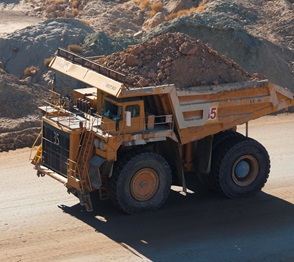
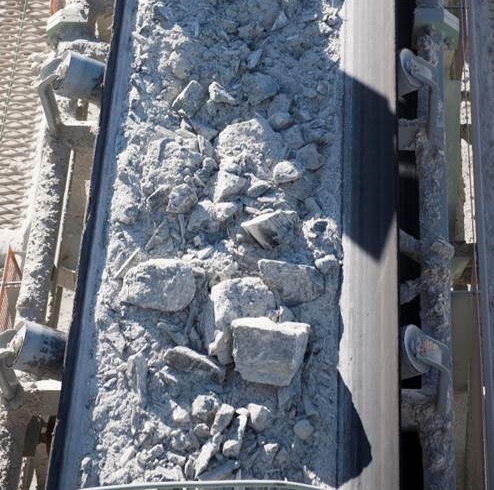 Ore is transported from the mine pit by haul trucks capable of carrying up to 400 tons to either the Crushing and Grinding section of the mine (Step 5) or directly to the Leach Pad (Step 7). Ore transportation operations can generate particulate matter (i.e., dust) that contains TRI chemicals.
Ore is transported from the mine pit by haul trucks capable of carrying up to 400 tons to either the Crushing and Grinding section of the mine (Step 5) or directly to the Leach Pad (Step 7). Ore transportation operations can generate particulate matter (i.e., dust) that contains TRI chemicals.
For TRI reporting purposes, as an example, the TRI chemicals in the dust are generally reported as a fugitive air release.
Next Prev
4. Waste Rock
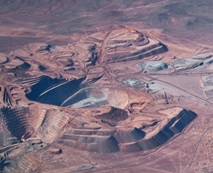 In general, a sizeable portion of the rock that is blasted contains insufficient concentrations of target metals to economically process at any given time. This low-grade rock is called “waste rock” and normally must be removed from the mine to allow access to the ore-grade rock (i.e., rock that contains sufficient concentrations of target metals to economically process). The excavated waste rock is transported from the pit in haul trucks and then may be placed in “waste rock piles.” These waste rock piles are subject to engineering controls and regulations and are typically located within the boundaries of the mining facility. Waste rock may also be used for backfilling previously mined portions of the pit or for construction of roads on facility grounds.
In general, a sizeable portion of the rock that is blasted contains insufficient concentrations of target metals to economically process at any given time. This low-grade rock is called “waste rock” and normally must be removed from the mine to allow access to the ore-grade rock (i.e., rock that contains sufficient concentrations of target metals to economically process). The excavated waste rock is transported from the pit in haul trucks and then may be placed in “waste rock piles.” These waste rock piles are subject to engineering controls and regulations and are typically located within the boundaries of the mining facility. Waste rock may also be used for backfilling previously mined portions of the pit or for construction of roads on facility grounds.
For TRI-reporting purposes, as an example, excavated waste rock includes TRI chemicals (for example, metal compounds). Because large mines often relocate millions of tons of excavated waste rock, the total reported quantity of TRI chemicals can be quite large (for example, millions of pounds). The quantities of TRI chemicals reported by a mining facility can vary significantly from year to year, depending on the concentration of the TRI-reportable chemicals and volumes of waste rock mined. Waste rock is often the largest source of TRI-reportable releases (in the form of on-site disposal to land) for a metal mining facility.
Next Prev
5. Crushing and Grinding
 At some facilities, mined ore undergoes crushing and grinding operations that reduce large blocks and fragments of ore to smaller sizes ranging from small rocks to sand.
At some facilities, mined ore undergoes crushing and grinding operations that reduce large blocks and fragments of ore to smaller sizes ranging from small rocks to sand.
The series of equipment used for crushing is referred to as a “crushing circuit.” Similarly, the series of equipment used for grinding is referred to as a “grinding circuit.” In either case, a “circuit” is a series of equipment that sequentially reduces the size of the ore to a fine enough size for recovering the metal of interest. Crushing is a dry process, although water sprays and/or other dust control devices can be used to minimize the release of particulate matter that it generates. Then the crushed ore is usually mixed with water as it enters the grinding circuit to be ground down to the consistency of sand. Once the ore is ground down to a consistent small size, it is transferred to recovery operations (for example, Steps 6 and 7).
Additionally, during these steps, metal parts of the crushing and grinding equipment wear down, so additional metals (for example, chromium, manganese, and nickel) can be transferred with the ore or waste rock (Step 4) to the following steps depicted in this diagram and may be present in TRI releases reported for those steps.
For TRI reporting purposes, as an example, the TRI chemicals in dust that are not successfully captured by a control device but rather is released to air through a stack will generally be reported as a TRI stack air release.
Next Prev
6. Concentrator
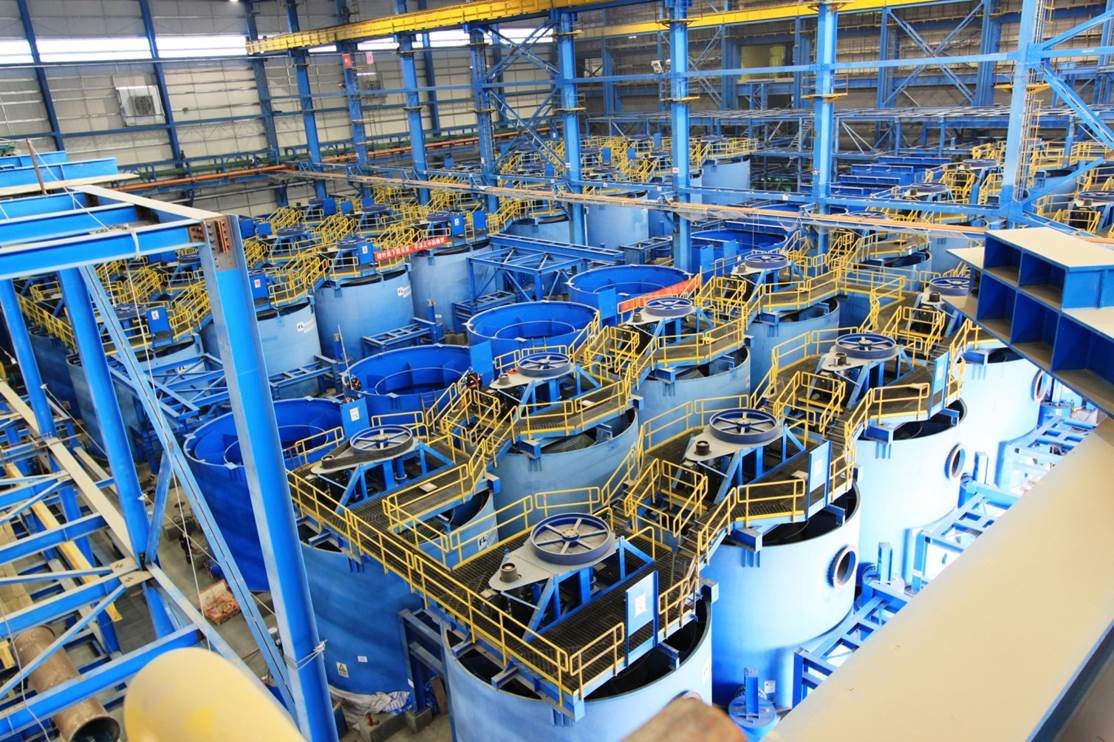
At some mines, an operation known as “froth flotation” follows the crushing and grinding of the ore, resulting in a valuable metal concentrate and an unwanted fine rock slurry (known as "tailings"). The tailings are pumped to the Tailings Impoundment (Step 9).
The valuable metal concentrate is collected and filtered to remove excess water, and then conveyed to a storage area. Due to the large volume of water that mine sites use, the water is typically reused. The concentrate can proceed either through metal recovery (Step 8) at the facility, or it can be transported as an intermediate product via truck or railcar to another site for metal recovery that would make the final metal product(s), such as copper (Cu0) metal.
For TRI reporting purposes, as an example, the TRI chemicals from the concentrate that are in the form of dust are generally reported as either a fugitive or stack air release.
Next Prev
7. Leach Pad
 Certain types of ores (for example, copper and gold) are processed for metal recovery using a chemical leaching process. In this step, ore is placed (either directly from the blasting step, from a crushing step, or from a grinding step) in large piles known as “leach pads”. The leach pads are subject to engineering controls and regulations and are typically located within the boundaries of the mining facility. A reagent, such as a solution containing sulfuric acid or sodium cyanide, is sprayed or dripped over the leach pad to cause a reaction that produces a compound of the target metal dissolved in the solution. The metal-containing solution is collected and transferred to a metals recovery plant for isolation and recovery of the pure metal (Step 8).
Certain types of ores (for example, copper and gold) are processed for metal recovery using a chemical leaching process. In this step, ore is placed (either directly from the blasting step, from a crushing step, or from a grinding step) in large piles known as “leach pads”. The leach pads are subject to engineering controls and regulations and are typically located within the boundaries of the mining facility. A reagent, such as a solution containing sulfuric acid or sodium cyanide, is sprayed or dripped over the leach pad to cause a reaction that produces a compound of the target metal dissolved in the solution. The metal-containing solution is collected and transferred to a metals recovery plant for isolation and recovery of the pure metal (Step 8).
After the target metal is recovered from the solution (Step 8), the reagent may be returned to the leach pad to leach more of the targeted metal from the ore.
For TRI reporting purposes, as an example, when a leach pad is at the end of operation, mining facilities reclaim the leach pads and report remaining quantities of metal compounds as an on-site disposal to land. Due to the large size of many leach pads, the associated quantities of TRI chemicals (for example, metal compounds present in the ore) that are reported as on-site land disposal can be in the millions of pounds.
Next Prev
8. Metals Recovery
 The metal-bearing concentrate or solution resulting from the Concentrator (Step 6) or the Leach Pad (Step 7) is moved through several steps involving pyro-metallurgical methods (for example, a smelter), hydro-metallurgical methods (for example, solution extraction, leaching and electrowinning or precipitation), or a combination of such methods, to isolate the target metal from the rest of the material. Some metal mines do not generate a concentrate and employ solution extraction directly after the crushing/grinding process.
The metal-bearing concentrate or solution resulting from the Concentrator (Step 6) or the Leach Pad (Step 7) is moved through several steps involving pyro-metallurgical methods (for example, a smelter), hydro-metallurgical methods (for example, solution extraction, leaching and electrowinning or precipitation), or a combination of such methods, to isolate the target metal from the rest of the material. Some metal mines do not generate a concentrate and employ solution extraction directly after the crushing/grinding process.
TRI chemicals can be released as materials move through metals recovery, and reported quantities released to air include either fugitive air releases or stack air releases if the emissions pass through an air pollution control device, such as a baghouse or scrubber. In the pyro-metallurgical process, sulfur dioxide and metal-containing particulate matter are generated. The sulfur dioxide is converted into sulfuric acid and sulfuric acid mist can be released as fugitive or stack emissions. In the hydro-metallurgical process, the sulfuric acid that is applied in the leaching step is carried through with the target metal to the final recovery step and during that process a sulfuric acid mist is generated.
Smelters produce a material called slag. Slag is the material remaining after the target metal has been recovered from the metal concentrate; slag may be reprocessed or disposed of in structures within the mining facility that are subject to engineering controls and regulations.
For TRI reporting purposes, as an example, the sulfuric acid mist generated during leaching is generally reported as either a fugitive or stack air release.
Next Prev
9. Tailings Impoundment
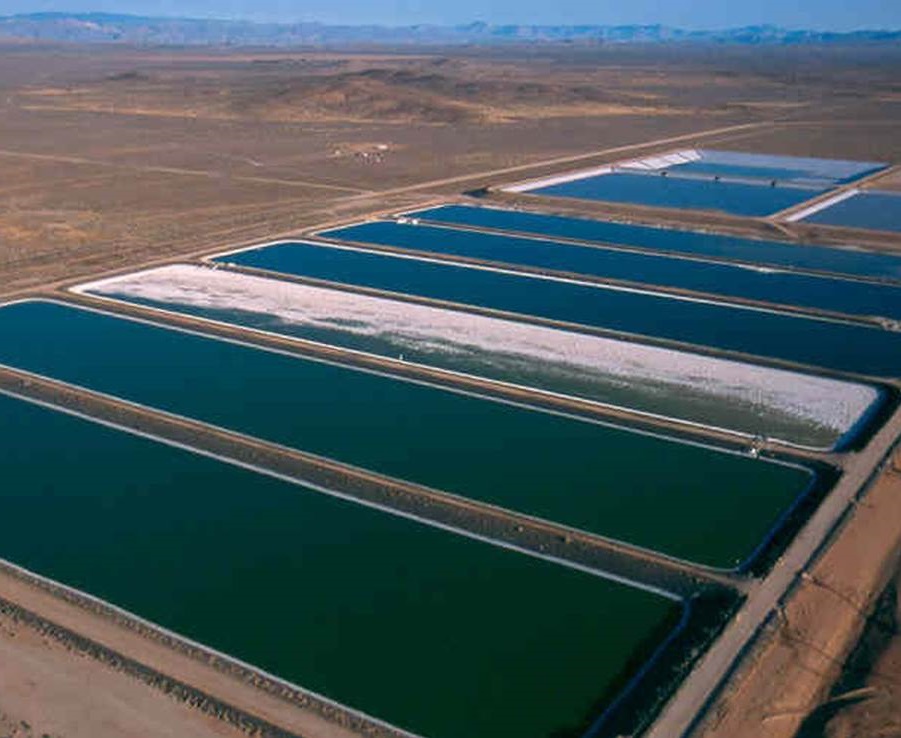 The fine rock tailings generated in the concentrator (Step 6) are pumped to a tailings impoundment. For some metal mines that do not generate a concentrate, tailings also may be generated during the solution extraction process (metals recovery (Step 8)). The tailings impoundment is a land-based disposal structure, subject to engineering controls and regulations. Tailings impoundments can occupy hundreds or even thousands of acres of a mining facility. Tailings generally include TRI metal compounds (for example, compounds of lead, zinc, arsenic, copper, and mercury) and TRI chemicals in reagents from the solution extraction process. As noted in Step 5, these tailings may also contain chromium, manganese, and nickel from metal wear in the crushing and grinding processes.
The fine rock tailings generated in the concentrator (Step 6) are pumped to a tailings impoundment. For some metal mines that do not generate a concentrate, tailings also may be generated during the solution extraction process (metals recovery (Step 8)). The tailings impoundment is a land-based disposal structure, subject to engineering controls and regulations. Tailings impoundments can occupy hundreds or even thousands of acres of a mining facility. Tailings generally include TRI metal compounds (for example, compounds of lead, zinc, arsenic, copper, and mercury) and TRI chemicals in reagents from the solution extraction process. As noted in Step 5, these tailings may also contain chromium, manganese, and nickel from metal wear in the crushing and grinding processes.
For TRI reporting purposes, as an example, the TRI chemicals in the fine rock tailings are generally reported as an on-site release to surface impoundment.
Next Prev
10. Products
 The metal products from metal mining operations vary, depending upon the type of mine, but may include bricks, bars, tubing or sheets of the mined metal. Metal products are used to make a variety of commodities, many of which are highly important and widely used. Copper, for example, is used to manufacture electrical wires, plumbing materials, batteries, smart phone components, computer components, and currency. And, gold, for example, is used in medical equipment, among other uses.
The metal products from metal mining operations vary, depending upon the type of mine, but may include bricks, bars, tubing or sheets of the mined metal. Metal products are used to make a variety of commodities, many of which are highly important and widely used. Copper, for example, is used to manufacture electrical wires, plumbing materials, batteries, smart phone components, computer components, and currency. And, gold, for example, is used in medical equipment, among other uses.










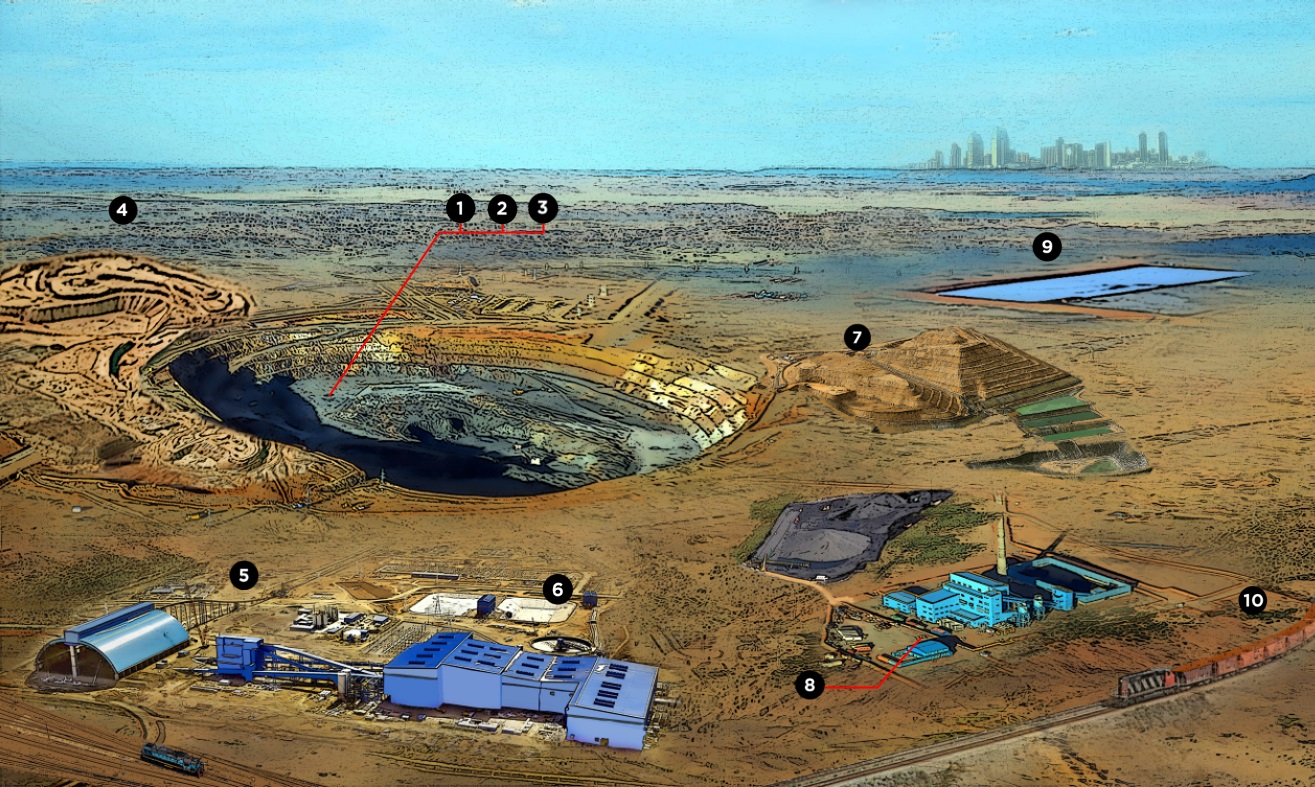
Summary of the Metal Mining Sector and TRI Reporting
Most of the quantities of TRI chemicals reported by metal mining facilities are, by far, on-site disposals to land (see steps 4, 7, 8 and 9 for example), though TRI chemicals are also released on site to air and water and are transferred to off-site disposal locations as well. For example, air releases of TRI chemicals occur in the form of fugitive emissions (such as chemicals in dust created on site) (see steps 1, 2, 3, 4, 6 and 8 for example) and stack emissions (such as chemicals in collected dust that passes through an air pollution control device) (see steps 5, 6 and 8 for example). A metal mining facility reports on TRI chemicals (for example, metal compounds) in rock and ore that it manages as waste on site, as well as on TRI chemicals related to mining operations such as extracting, processing, and refining target metals. When applicable, a metal mining facility must also report on-site waste treatment, recycling and energy recovery as well as transfers off site for waste treatment, disposal, recycling, and energy recovery.
Notes About Using This Webpage
- The operations depicted in this graphic are intended to be illustrative of various practices of metal mining facilities across the United States, but not all of the practices depicted take place at every metal mining facility.
- This graphic does not attempt to describe all types of releases or other waste management practices, TRI-reportable or otherwise, that may take place at any given metal mining facility. Similarly, the types of releases noted as being associated with a mining operation, as well as the way they are said to be reported, are only examples. Nor does this graphic address potential exposure to releases of chemicals.
- TRI reporting exemptions are not described here, but in some instances, may be applicable at metal mining facilities. This graphic and accompanying text do not present any official EPA interpretations of TRI requirements. This material cannot be used by facilities as guidance for compliance with TRI-related regulations.
- In addition to TRI reporting requirements, federal and state regulatory controls apply to many of the TRI-listed chemicals reported, which this graphic does not address in detail.
Limitations of TRI Data in Determining Potential Risk
Please note that TRI data alone cannot reveal the degree to which the public is exposed to listed chemicals. The presence of a chemical in the environment must be evaluated along with the potential and actual exposures and the route of exposures, the chemical’s fate in the environment and other factors before any statements can be made about potential risks associated with the chemical or a release, none of which are addressed by this graphic. However, TRI data can, in conjunction with other information, be used as a starting point in evaluating such exposures and the risks posed by such exposures. EPA recommends that users of TRI data consult EPA’s guidance on “Factors to Consider When Using Toxics Release Inventory Data” for further information. Top of Page
